Design - What do I need to know?
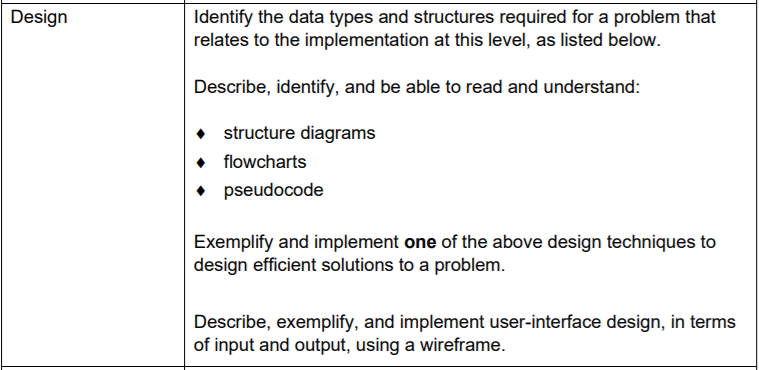
Notes & Slides
At the design phase, programmers will consider the purpose and functional requirements identified during the analysis phase. The functional requirements will be used to create a series of steps that can be converted to code during implementation.
It is necessary to be able to read, understand, describe and identify each of the following design techniques:
- Pseudocode
- Flowcharts
- Structure diagrams
It is also necessary to be able to create the design for a given problem using one of the above techniques.
Pseudocode
Pseudocode is a natural language-based design methodology used to define an algorithm and refinement. It is a kind of structured English for describing algorithms and is intended for human reading. It typically omits details such as variable declarations and system-specific code. Pseudocode can look like code in an implemented problem but it doesn't have the same strict syntax.
The design should begin by defining the main steps or algorithm. Where a step of the algorithm requires refinement, a numbering system may be used to denote which line of the algorithm is being refined.
Identified selection and repetition in the problem, may be highlighted with indentation.
Pseudocode Snippets
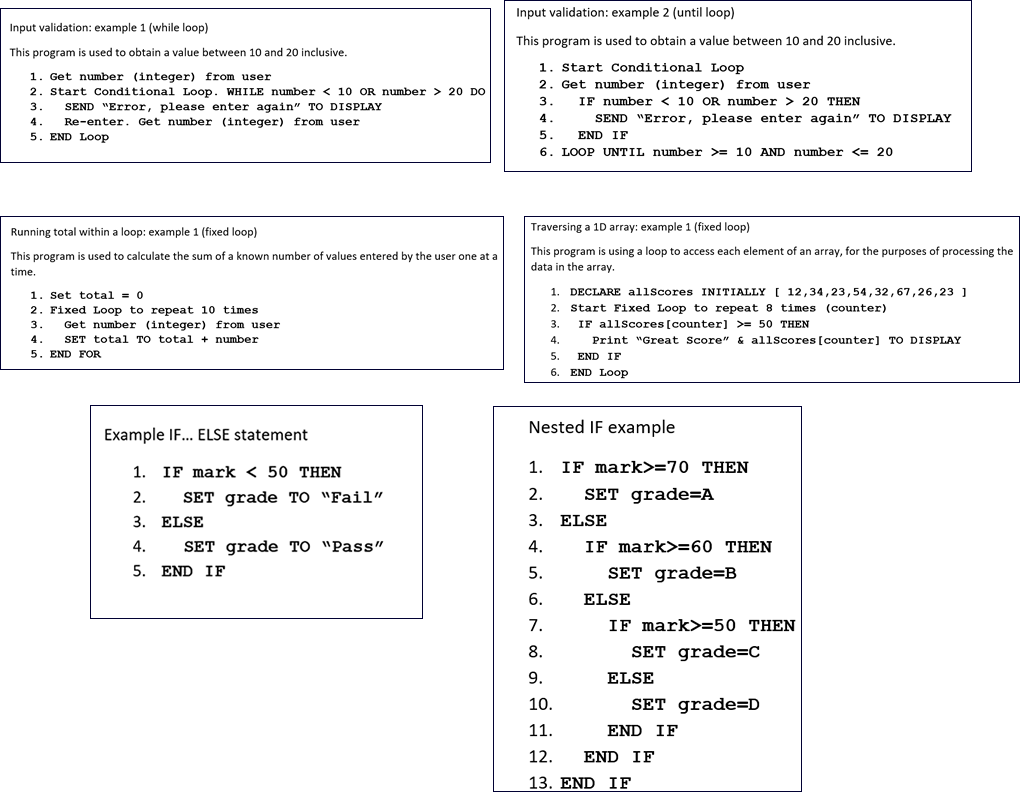
Full examples with refinements
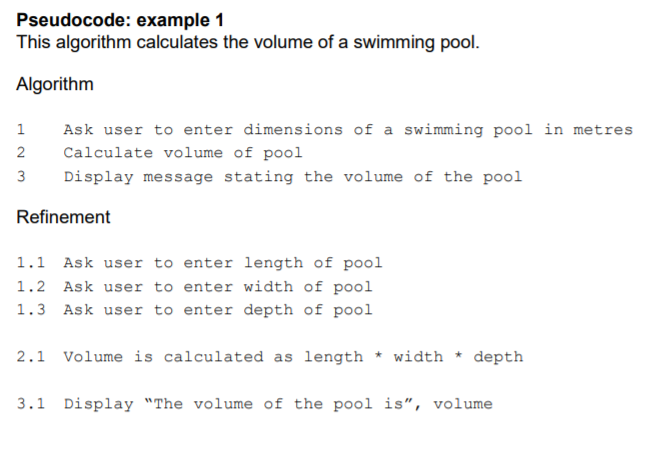
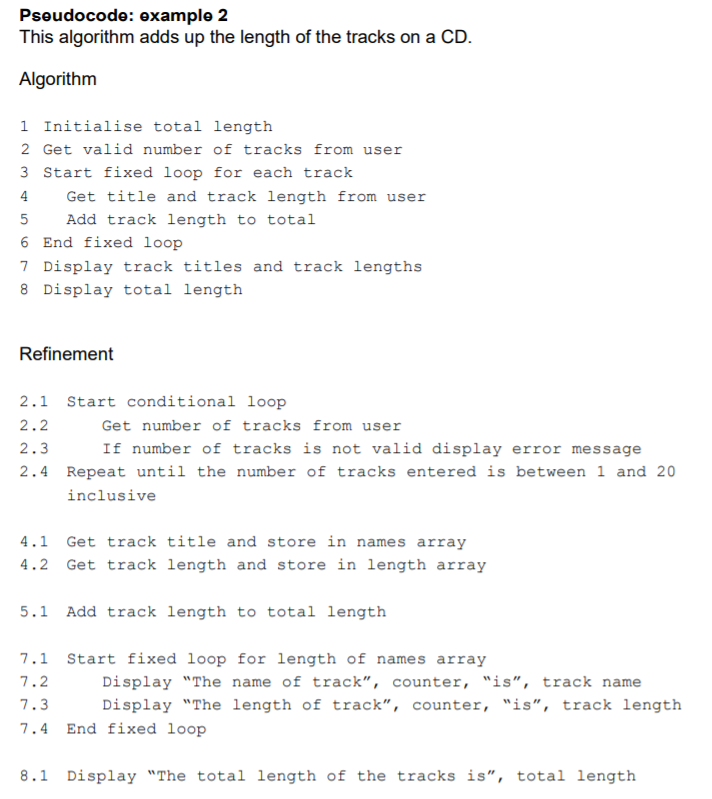
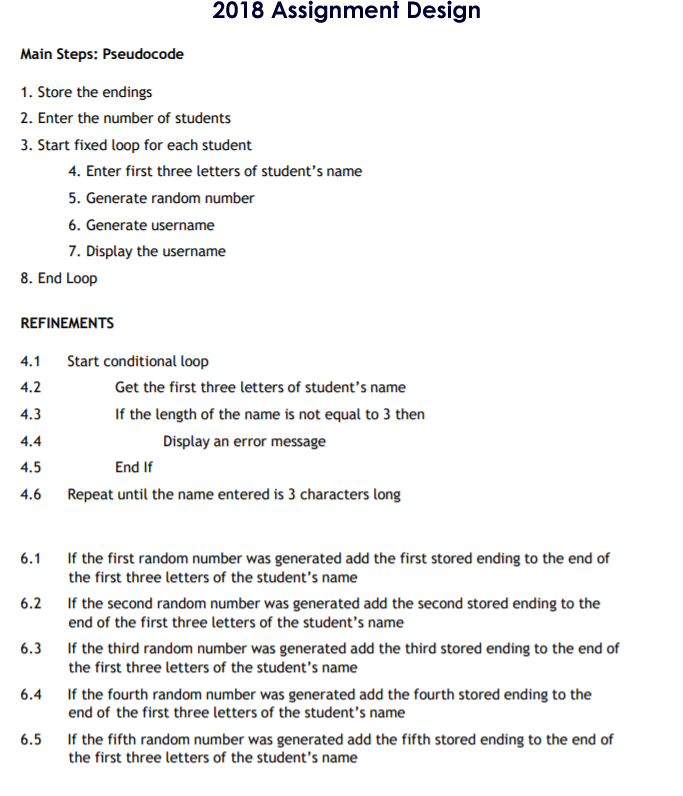
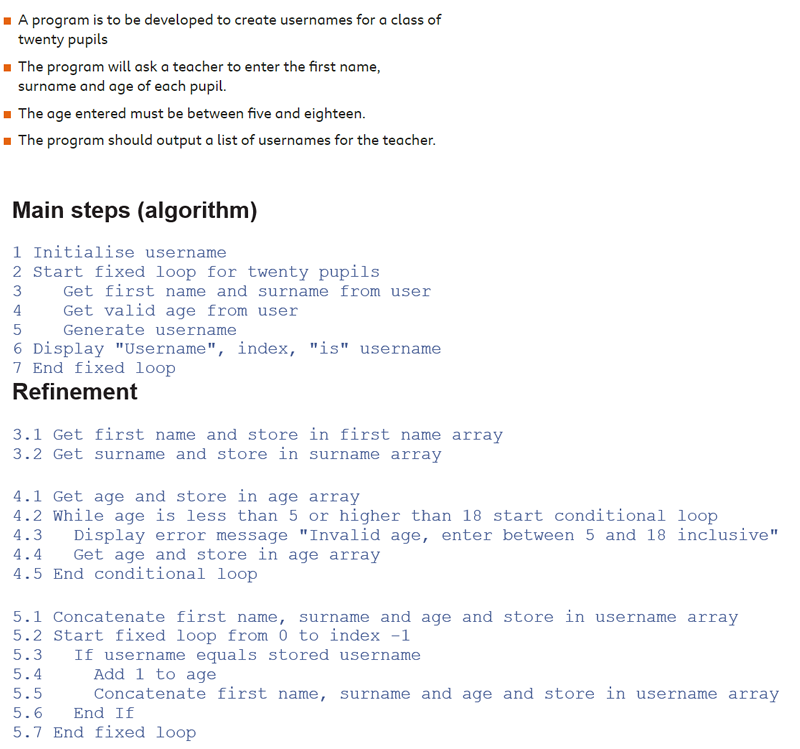
Flowchart
More on Flowcharts at BBC Bitesize - Click here
Structured Diagrams
More on Structure Diagrams at BBC Bitesize - Click here
